I was recently tasked with testing First Ascent’s brand new “Stealth” hydration pack. I was initially a little sceptical as I like to stick to brands I know and trust and the only of their products I have ever used is the technical shirts that come as part of your entry fee for the annual Table Mountain Challenge. However, having made a conscientious decision to start “trying more new things” I decided to give the pack a go and see where it got me.

First up, the pack is officially known as the “Stealth 2L + 5L” as per First Ascent’s website. The denomination is simple enough – the “Stealth” bit is a fancy name, whereas the “2L + 5L” refers to the storage capacity, being a 2 litre bladder that fits in the back and a further 5 litres of storage space via a variety of pockets and compartments spread throughout the rest of the pack. The bladder fits in a separate pocket against your back, the idea of this being that this will make refilling (at an aid station for instance) easier to do on-the-move, as the whole pack doesn’t need to be taken off in order to access the large (screw-capped) opening at the top.
In theory this works fine, but my practical experience has taught me that the one or two minutes you gain by not taking off a pack at an aid station is not worth the annoying sound of water sloshing around for the rest of your run/race (a situation that can easily be remedied by turning the bladder upside down and sucking out all the air after filling it up – an old trick I was taught by a running mate on one of my first long runs). Long story short therefore – rather take off the pack, flip it upside down after refilling and suck out all the excess air than worry about having someone fill it while on-the-go.
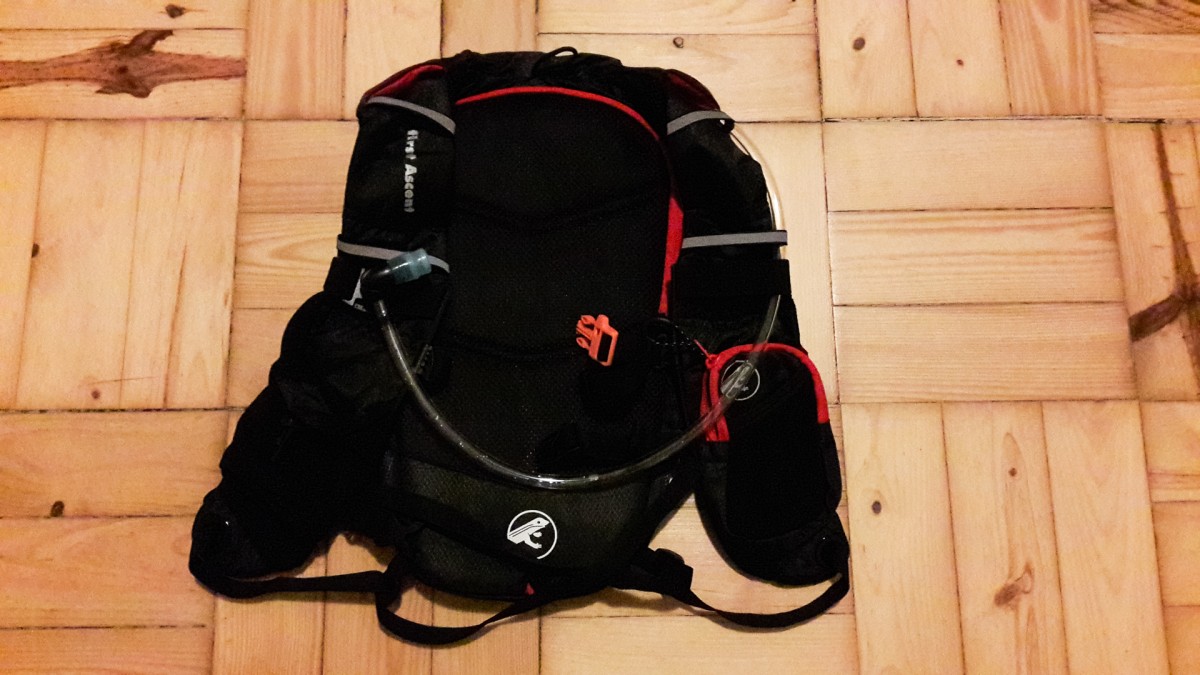
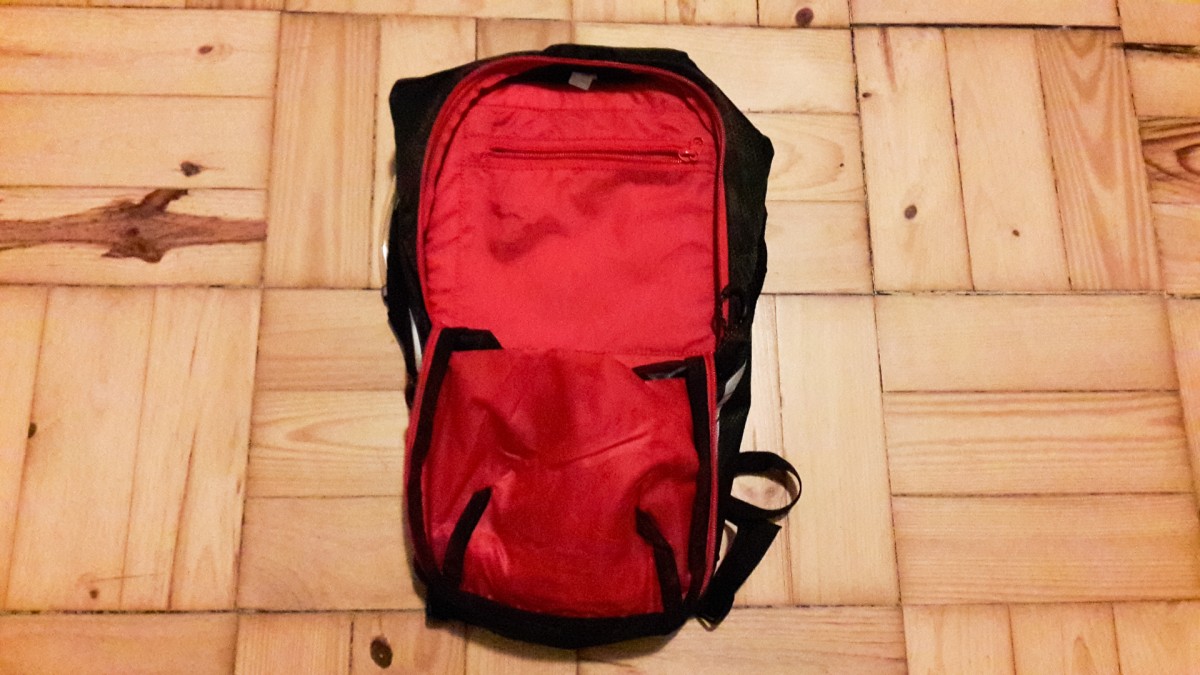
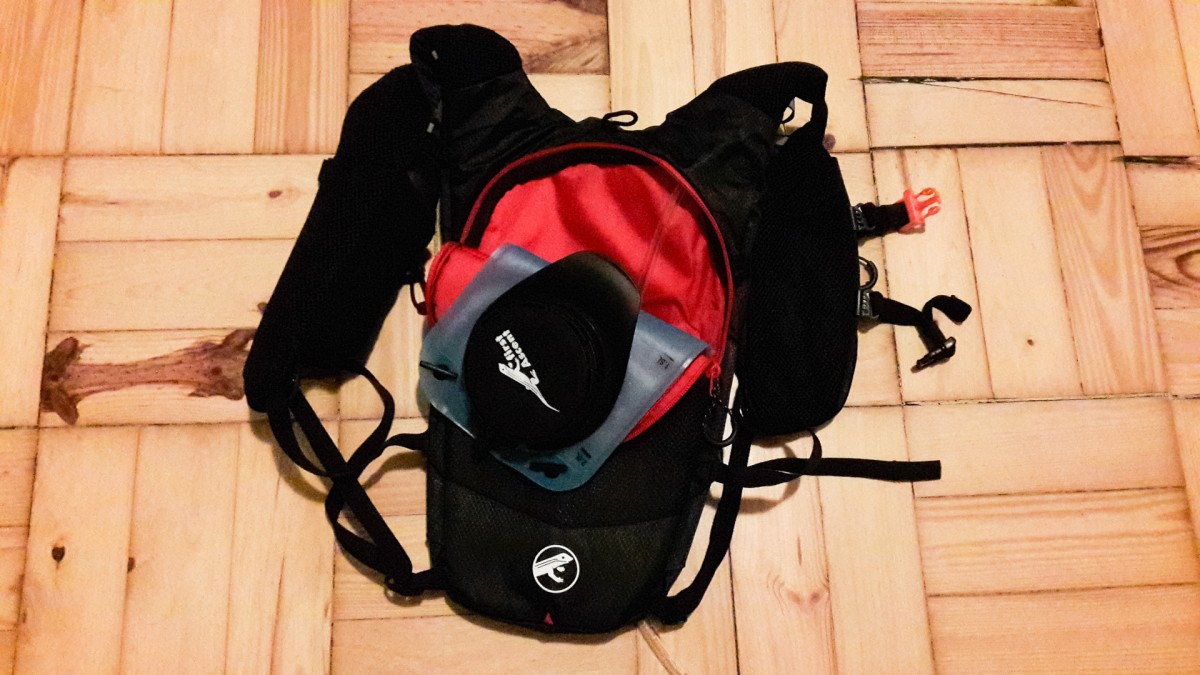
If you would still prefer to not take my advice (and you have running partners that won’t punch you when the noise of water rolling around becomes too much to bear), the bladder is luckily manufactured in such a way that you can quickly unclip the hose and then remove it from the compartment, therefore meaning you don’t have to re-thread the whole setup when refilling. The hose itself is looped through from the back via the shoulder strap on the left, and then clips onto the right harness via a magnetic attachment that works surprisingly well to keep the drinking valve in place. The hose is threaded from the left side, meaning that the drinking valve will then sit on the right strap. It doesn’t appear that you can switch sides, as the valve’s magnetic attachment is not detachable – not a real problem but for the sake of customisability (I am used to drinking from the other side) this would have been a nice feature. The valve is of the same variety as most (First Ascent call it their “Bite Me” technology), meaning that it’s a simple bite and suck action to take a sip of water when needed. The hose flaps around a little too much for my liking, and I would have liked to see an additional loop on one of the chest straps in order to negate this, but overall this is not enough of an issue to warrant a mark-down from me and the system as a whole works well.
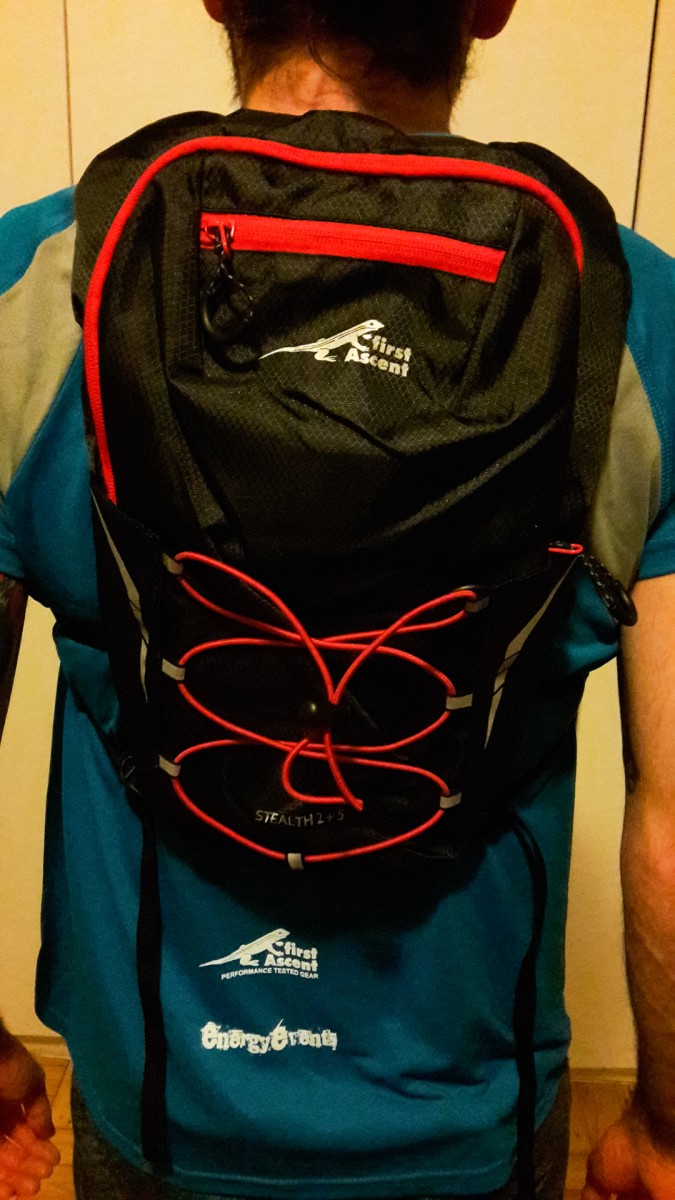
The rest of the pack consists of a large “main” compartment in the back (most of the additional 5L), with a separate, zippered compartment inside for less frequently used items (think space blanket, keys etc.) which appears to be at least water resistant (even if not fully waterproof) and another small pocket on the outside. The large compartment easily fits a windbreaker and some additional bits and bobs (extra buff/hat, first aid kit etc.) and should comfortably be large enough to fit most kit required by the directors of the average trail race. The front of the pack has two additional pockets, namely a zippered pocket on the left (with an additional mesh pocket) which will most probably be used to keep gels and a cell phone (what is a run without at least one selfie?) within close reach. The right strap has an additional stretch pocket shaped for storing a bottle should you prefer to carry some electrolytes in addition to the water in the back, which could also be used for any other type of additional storage as it has a draw-string that should stop items from falling out. In addition there is also a bungie cord looped over the back of the pack in order to add some additional outside storage as well as allowing for the pack to be compressed when not fully loaded. (As an aside – I always try to be very mindful when storing jackets on the outside of any pack. Not only are they likely to get snagged and possibly torn when ducking under a low-hanging branch, they can sometimes fall out without you noticing. Both of these scenarios could lead to a particularly expensive run, especially if you are stashing a waterproof jacket there.)
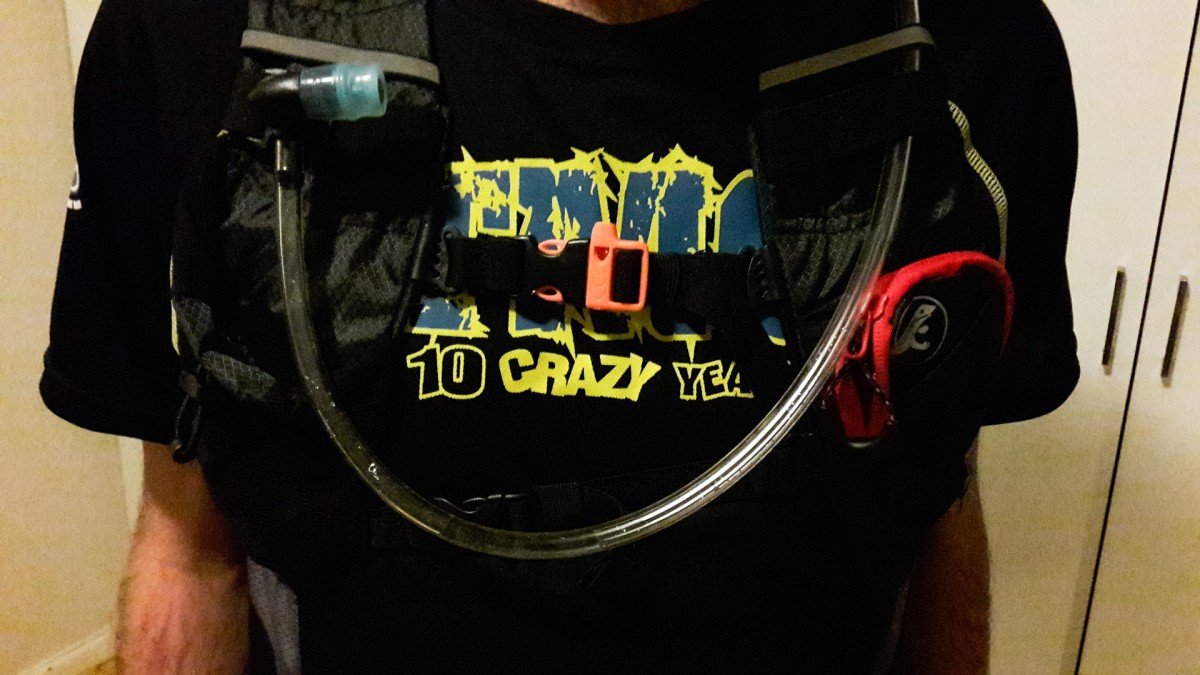
Overall, the fit of the pack is good, with two adjustable straps (including an emergency whistle on one of the clips) across the chest area (with these sitting up high enough so that they shouldn’t cause any problems for female users) as well as two looped straps along the sides (that are adjustable to fine tune the fit) keeping the pack secure and snug. There is enough “play” so that the straps don’t make you feel constricted, while at the same time not having too much bounce and ensuring that the pack fits securely. I have experimented with various levels of capacity and the Stealth seems to cope easily well whether filled to the brim or empty.
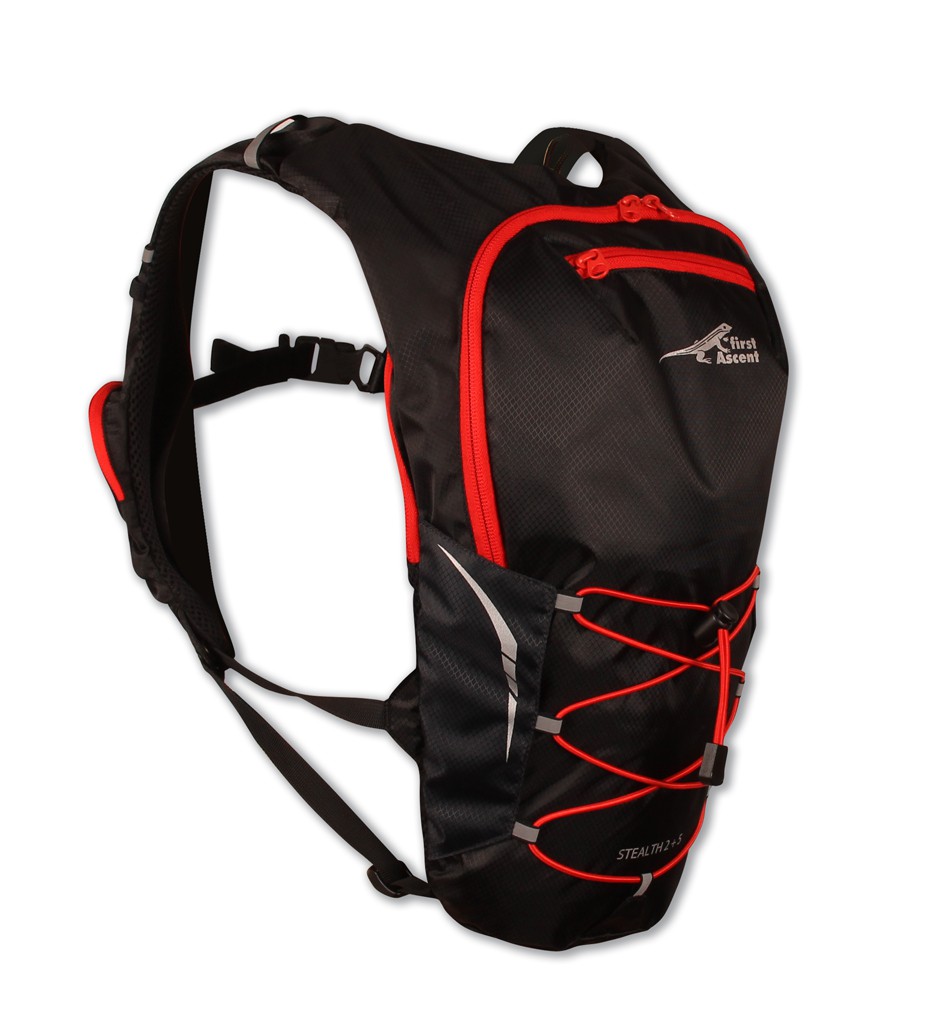
All in all, if you are looking for an easy to use hydration system which won’t cost an arm and a leg (currently going for under R1,000), the Stealth is not a bad option at all. The only negatives I found was that the hose was a little “flappy” for my liking and that I would have preferred being able to choose which side of the pack to thread through. The Stealth certainly won’t win any prizes for originality, and if you are looking for a simple piece of equipment that is well made and will get the job done efficiently The Stealth is more than up to the task.




